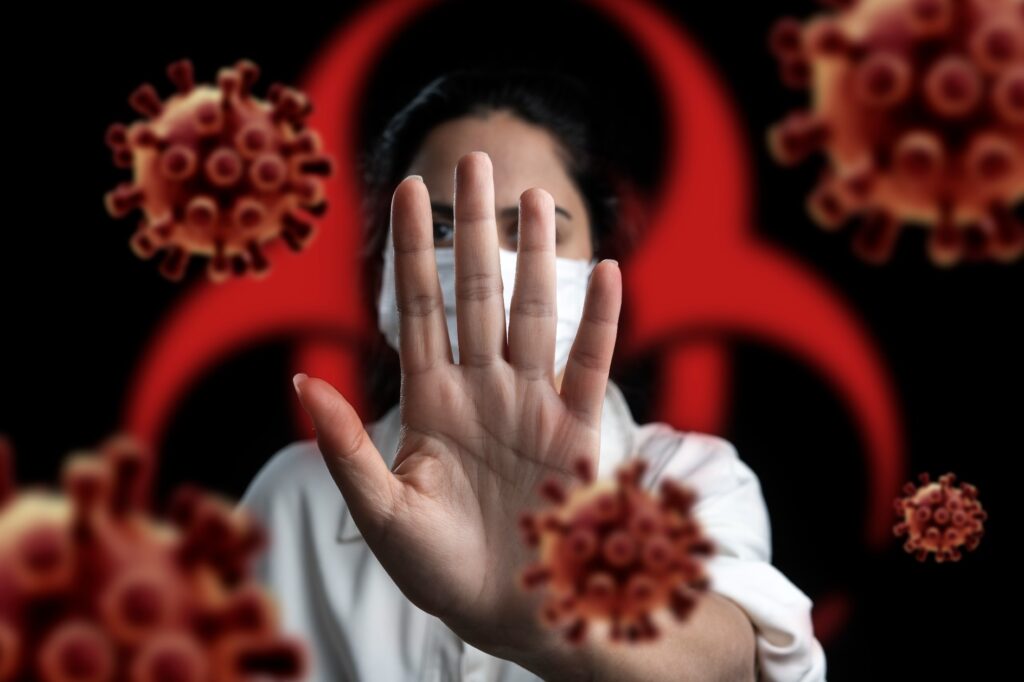For decades, I’ve studied the movements of harmful plants, animals, and microbes around the planet, tracking countless threats to the environment and human health — from Asian carps to parasitic worms.
Three years into the COVID-19 pandemic, I sympathize with those who want to know how this pathogen spilled over to humans. Was it the result of a lab leak in Wuhan, China, or is there a link to raccoon dogs illegally traded at the Huanan Seafood Market? But what worries me far more is the next pandemic — the next spillover event that could send the world spiraling. I’m keenly aware of what’s not being done to prevent it.
As U.S. politicians tussled over COVID-19’s origins in the spring — and government agencies continue to come to conflicting conclusions — it’s clear how wasteful and counterproductive this debate has become. As some of the relevant intelligence is released, a consensus is emerging about one thing: We will likely never know the answer for certain.
To prevent the next pandemic, we don’t need to.
That’s because even if the COVID-19 pandemic emerged from a lab leak in Wuhan, we know with very high confidence from decades of research that future pandemics are likely to result from non-lab related spillovers of pathogens from wildlife to humans.
Policymakers and the American public have been swept up in a debate surrounding COVID’s origins that is detracting from what we need most: a robust strategy to fund and support proven pandemic prevention measures.
Intelligence operations of at least eight federal agencies, plus the National Intelligence Council, have spent at least two years, and millions of dollars, trying to determine the exact mechanisms by which SARS-CoV-2 made its way from wildlife (most likely a bat) into humans. The intelligence reports are unanimous on only three key findings: The virus was not weaponized; it was not deliberately released; and no other conclusions can be drawn with anything approaching high confidence.
No matter how many hearings the U.S. House Select Subcommittee on the Coronavirus Pandemic holds, the lack of essential data from China will continue. The resources of this subcommittee and the rest of government would be better spent on implementing steps that would reduce the risk of another pandemic.
A 2001 report from the Government Accountability Office (GAO) and a 2006 report that I led both concluded that prevention should be the top priority for policy and practice, regardless of the kind of organism considered. This is because the benefit-to-cost ratio for prevention is so high.
Every dollar spent on preventing spillovers of pathogens to humans could save as much as $30, according to a 2022 analysis of the last century’s global zoonotic pandemics. Given the conservative estimation of costs in that analysis, and the total cost of the current pandemic through 2024 — now estimated to be $14 trillion in the United States alone — the savings are clearly even higher.
According to the federal interdepartmental National Invasive Species Council, only 27% of the total FY 2023 budget allocations to harmful nonindigenous species were devoted to prevention. Correcting that balance in future budgets should be a top priority of the House Select Subcommittee on the Coronavirus Pandemic.
Funds should be directed to the four highest priority tactics to prevent pandemics:
First, developing and applying risk assessments that identify where, when, and on what potential host species surveillance should be aimed. Zoonotic spillover — the movement of a pathogen from one host species to another — is the predominant cause of emerging infectious diseases. Risk assessment systems developed recently by USFWS should include a larger focus on pathogens, and be used more frequently in regulatory decisions.
Second, reducing the importation of organisms that pose a high risk of hosting disease or otherwise causing harm, especially in the wildlife trade for pets and live food. Introduced animals are often vectors for infectious disease, with an average of six zoonotic species carried by each host species, thousands of which we haven’t yet encountered. Congress should strengthen USFWS’s authority to stop harmful importations, and restore its authority to control interstate transport of harmful species, which was removed by a 2017 federal court decision.
Third, deploying faster, cheaper, and better technologies like environmental DNA or eDNA, which I helped develop, can more accurately track pathogens in the environment, enabling smart surveillance focused on the circumstances most likely to bring humans into contact with potentially infectious microbes.
Finally, reducing deforestation for lumber or agriculture, especially in the tropics, where spillover is most likely to happen, because that is where humans come into contact with wildlife. Congress should fully fund the $9 billion efforts proposed by the Biden administration to use diplomatic, financing, and policy tools to reduce deforestation in the Amazon, Congo, and Southeast Asian forests.
All four steps would bring enormous side benefits to pandemic prevention: reduced harm to ecosystems and agriculture from harmful nonindigenous pests; increased economic growth with the commercialization of new surveillance technologies; and reduced biodiversity loss and climate change from forest protection.
If Congress applied a societal benefit:cost analysis to its own actions, it would reduce the time spent on COVID origin hearings, and pass legislation and appropriations that will prevent the next pandemic.
This article originally appeared in TheMessenger.
Learn more about David M. Lodge
